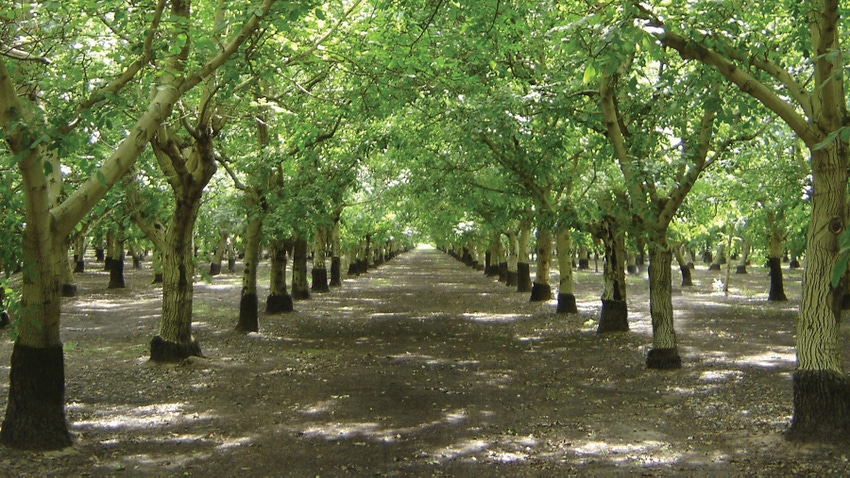
Sometimes the trumpets that herald something special sound some sour notes --- as in the case of walnut production for this year.
Walnut industry officials in September excitedly predicted a “stellar” harvest this season, and their enthusiasm gained support from the USDA, which forecast a 5% bigger crop from 2022 despite fewer bearing acres.
Pricing at the start of the marketing year is up 40% over where it ended last year, which is causing some grower consternation that buyers accustomed to discounted walnuts may be reluctant to pay more for this year’s crop.
But nature cooperated with sufficient rain and mild summer temperatures and this year’s crop is expected to have produced nut kernels that are meaty and light in color during a compressed harvest season. Growers are expecting they’ll need to only do a single shake based on current harvest of the Chandler variety which accounts for two-thirds of the state’s walnut crop.
This season is also expected to benefit Golden State growers because of less carry-over inventory as a large portion of previously harvested nuts have been sold to the government for nutritional assistance efforts.
Add to the mixed reviews, the fact that the USDA has revised its California walnut production forecast from an initial 790,000 tons down to 760,000 tons. This year’s numbers were reduced based on revised production and acreage removal forecasts. Assuming 2.03 tons per bearing acre, that acreage is now 375,000 acres, down by at least ten thousand acres, the first time in years that bearing acreage in the state has decreased.
One Yolo County grower removed most of his walnut trees following the “disaster” of last year’s crop and with new regulations being implemented, according to the California Farm Bureau. He is growing row crops instead.
A tough year
Robert Verloop, CEO and executive director for the California Walnut Commission and Board, admits it’s been a tough year that just concluded. “The majority of the harvest is in from the field and hauling/drying/processing is underway,” he says.
Asked if there was any reason for optimism, he noted, “International issues dominate our discussions as 65% of our crop is typically exported, meaning we have to deal with various tariff structures (like in Turkey where a 4% duty has risen to 15%). With an additional tax to consumers along with inflation and currency challenges, it creates more difficulty.
“Domestically we continue to be very optimistic after sales went up 30% in that market share last year in line with our marketing efforts to move walnuts away from the baking shelf and into the produce department via our #walnuts are produce too campaign,” he said.
Analyzing industry changes during his time in office, Verloop said: “Go back a few years into a time of prosperity and clearly our industry grew faster in supply than in demand. With new markets opening, there was a lot of promise for growth opportunity before being hit with duties and other restrictions. Unfortunately, once you plant a permanent crop, you kind of have to stay with it even if you’re in an oversupply situation.”
Today, it’s another story. “No sugarcoating it, we’re in a difficult time and while I’m optimistic, I’m also realistic. Returns to growers have been impacted and they’ve had to make some difficult decisions like removing less productive orchards not hitting that two ton per acre industry average. Over the recent past, we’ve seen removal of over 30,000 acres.”
And yet, the optimism remains. “We have a lot of work in the U.S. to turn on domestic demand and develop new products,” he said. “In the long run, turning around the industry is do-able so I remain optimistic because it’s a target-rich environment right now. We see so many things I think are possible. We just need to get going.”
Read more about:
WalnutsAbout the Author(s)
You May Also Like




